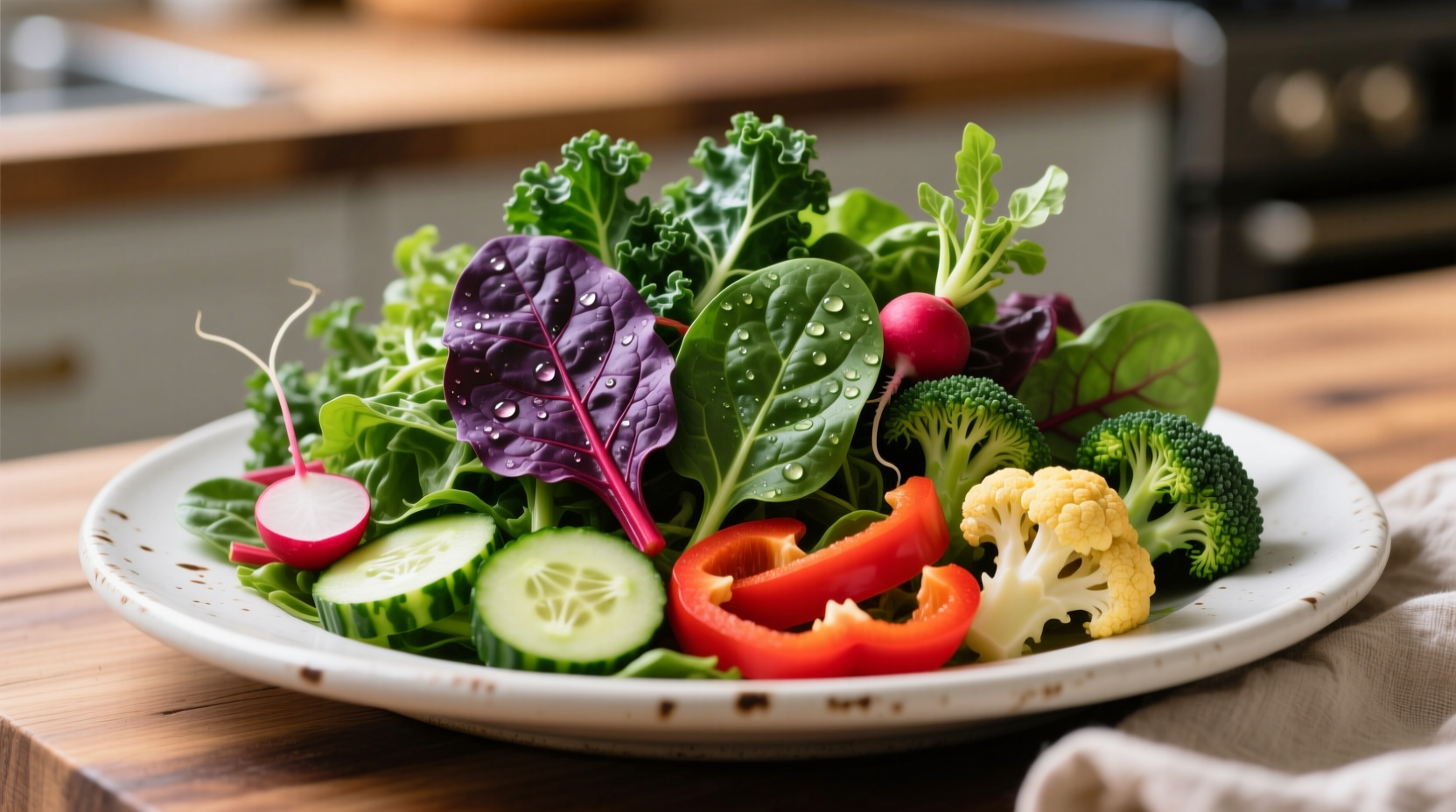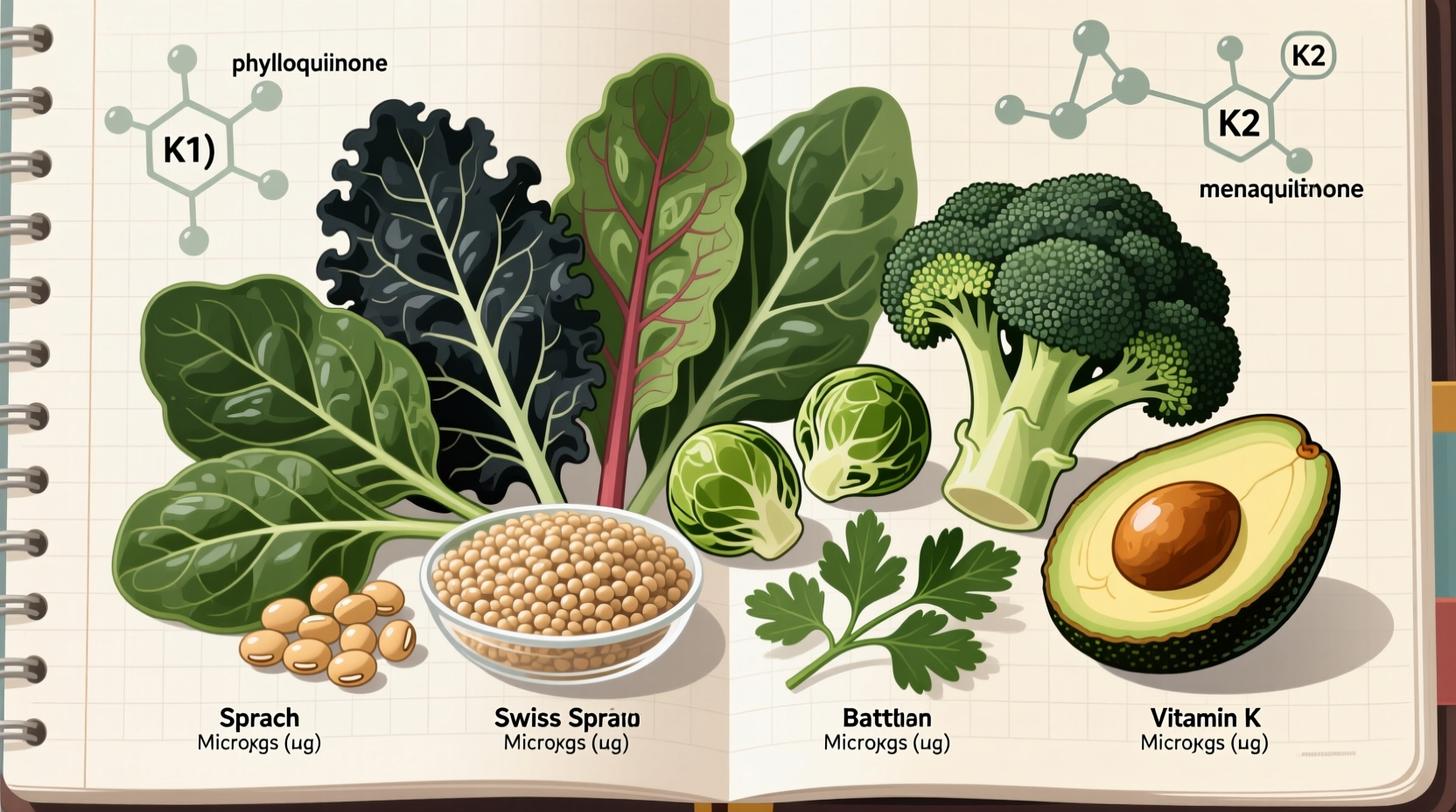The top vitamin K-rich foods include kale (547 mcg per cup cooked), spinach (444 mcg per cup cooked), broccoli (220 mcg per cup cooked), Brussels sprouts (219 mcg per cup cooked), and fermented foods like natto (850 mcg per 2-tablespoon serving). Vitamin K1 primarily comes from leafy greens while vitamin K2 is found in fermented foods and animal products.
Discover exactly which foods contain vitamin K and how to optimize your intake for better blood clotting and bone health. This comprehensive guide reveals the top vitamin K food sources, explains the difference between vitamin K1 and K2, and provides practical strategies to incorporate these nutrient-dense options into your daily meals. Whether you're managing blood thinners or simply aiming for optimal nutrition, you'll find science-backed information to make informed dietary choices.
Understanding Vitamin K: Why This Nutrient Matters
Vitamin K serves as your body's essential coagulation manager, activating proteins that regulate blood clotting and support bone mineralization. Unlike other fat-soluble vitamins, your body stores only minimal amounts, making regular dietary intake crucial. According to the National Institutes of Health, adults need 90-120 mcg daily, yet studies show nearly half of American adults don't meet this requirement.
Two primary forms exist in foods:
- Vitamin K1 (phylloquinone): Found in plant foods, especially leafy greens
- Vitamin K2 (menaquinones): Produced by bacteria, abundant in fermented foods and animal products

Vitamin K1 vs K2: Distinct Food Sources
While both forms support blood clotting, emerging research suggests vitamin K2 may offer superior benefits for bone and cardiovascular health due to its longer half-life in circulation. The Journal of Nutrition and Metabolism reports K2 remains active in your bloodstream up to 72 hours compared to K1's 6-8 hour duration.
Top Vitamin K1 Food Sources
Leafy green vegetables dominate the K1 category. Just one cup of cooked kale delivers more than six times your daily requirement. These plant-based sources work best when consumed with healthy fats to enhance absorption.
Top Vitamin K2 Food Sources
Fermented foods and animal products provide vitamin K2. Natto—a traditional Japanese fermented soybean dish—contains exceptionally high levels. Animal sources include grass-fed dairy and eggs, though in smaller quantities than fermented options.
Vitamin K Food Comparison Chart
| Food | Portion | Vitamin K (mcg) | % Daily Value |
|---|---|---|---|
| Kale, cooked | 1 cup | 547 | 456% |
| Spinach, cooked | 1 cup | 444 | 370% |
| Natto | 2 tablespoons | 850 | 708% |
| Broccoli, cooked | 1 cup | 220 | 183% |
| Brussels sprouts, cooked | 1 cup | 219 | 182% |
Daily Requirements and Practical Consumption Strategies
Your vitamin K needs vary by age and gender. Adult women require 90 mcg daily while men need 120 mcg. Pregnant or breastfeeding women maintain the 90 mcg requirement. The USDA FoodData Central database confirms that combining just two vitamin K-rich foods daily easily meets these targets.
Maximize absorption with these chef-tested techniques:
- Add olive oil or avocado to leafy green salads
- Steam rather than boil vegetables to preserve nutrients
- Pair vitamin K foods with other fat-soluble vitamin sources
- Incorporate fermented options like sauerkraut as condiments
Important Considerations for Specific Health Conditions
If you take blood thinners like warfarin, maintaining consistent vitamin K intake is crucial. Sudden increases or decreases can interfere with medication effectiveness. The Mayo Clinic recommends working with your healthcare provider to establish a stable daily intake rather than avoiding vitamin K foods completely.
For those with malabsorption conditions like Crohn's disease or celiac disease, vitamin K deficiency risk increases significantly. Monitoring through blood tests and potentially supplementing under medical supervision becomes important.
Putting Vitamin K Foods Into Practice
Transform your meals with these simple additions:
- Start your day with a spinach and mushroom omelet
- Replace lettuce with kale in sandwiches and wraps
- Add broccoli to your favorite stir-fry recipes
- Enjoy fermented foods like natto or sauerkraut as side dishes
- Create pesto using parsley or cilantro instead of basil
Remember that variety matters—rotating different vitamin K sources throughout the week ensures you benefit from the full spectrum of nutrients these foods provide.
Frequently Asked Questions
Which fruit has the most vitamin K?
Prunes contain the highest vitamin K content among fruits with approximately 26 mcg per half-cup serving. Kiwi and avocado also provide notable amounts at 28 mcg and 21 mcg per fruit respectively.
Can you get enough vitamin K from salad alone?
Yes, a large salad with 2 cups of raw spinach (299 mcg), 1 cup of chopped broccoli (101 mcg), and 1 cup of sliced Brussels sprouts (109 mcg) provides more than 500 mcg of vitamin K—well above daily requirements for most adults.
Does cooking destroy vitamin K in foods?
Cooking actually increases vitamin K availability in leafy greens by breaking down cell walls. Steaming preserves more nutrients than boiling. Vitamin K is heat-stable and not significantly degraded by normal cooking temperatures.
How quickly does vitamin K affect blood clotting?
Vitamin K begins influencing blood clotting factors within 6-12 hours after consumption, with maximum effect seen within 24-48 hours. This is why consistency in intake matters for those on blood thinners.
Are vitamin K supplements necessary for most people?
Most healthy individuals don't need supplements when consuming a varied diet with leafy greens and fermented foods. Supplements are typically recommended only for those with absorption disorders, on specific medications, or under medical supervision.











 浙公网安备
33010002000092号
浙公网安备
33010002000092号 浙B2-20120091-4
浙B2-20120091-4